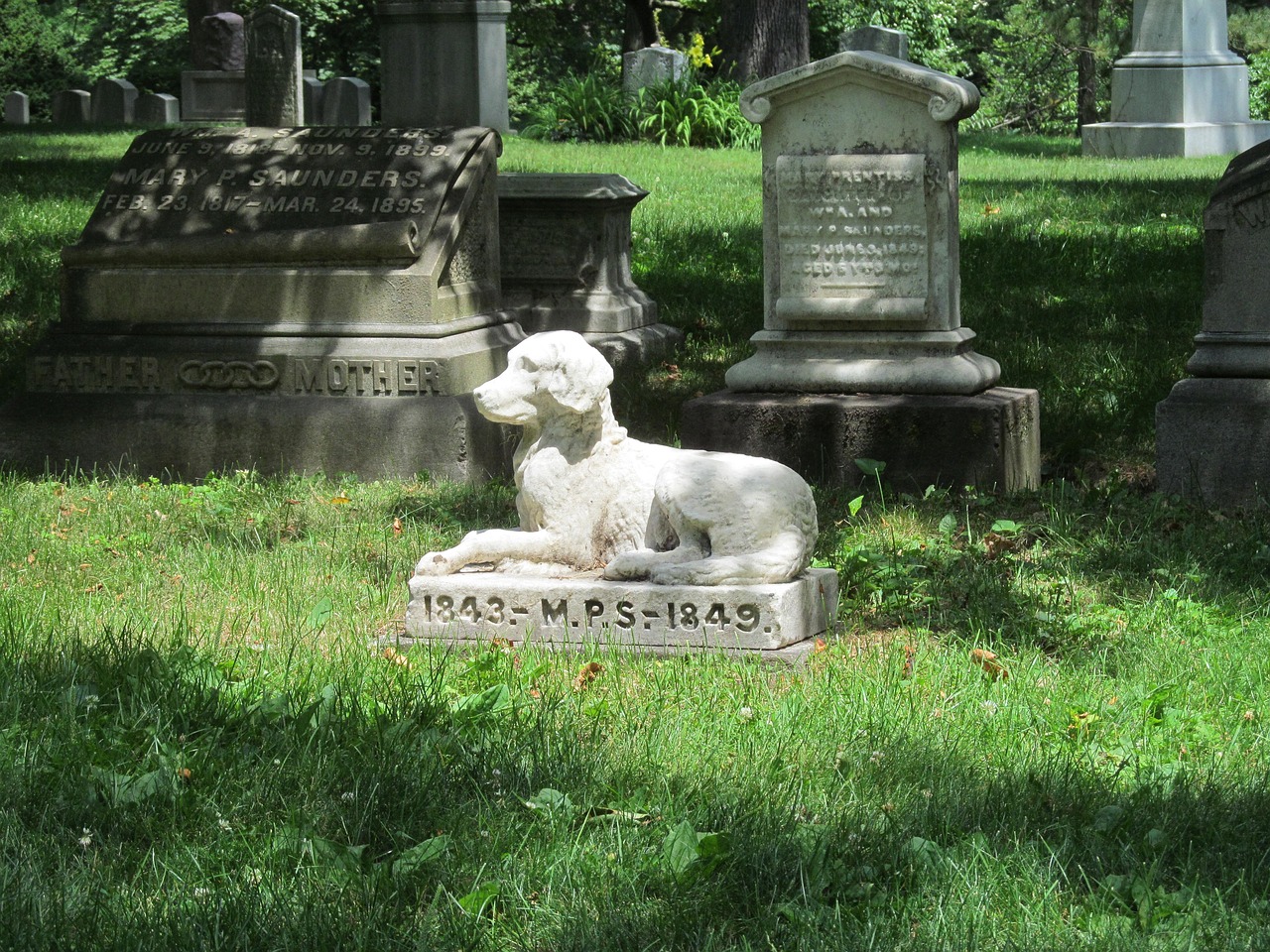Original Article: https://blog.theanimalrescuesite.greatergood.com/humans-pet-burials/
You’ve likely heard of pet cemeteries but assumed they were a relatively new concept. Perhaps not much older than the 18th or 19th centuries. That assumption would be false. As it turns out, humans have cared enough about their beloved pets to provide them with burials for thousands of years. Some individuals have even been discovered to have their pets buried with them in centuries-old tombs or graves.

Ancient Egypt & Roman-Era Pet Cemeteries
About four or five years ago, a group of Polish archeologists working in Egypt on a site along the coast of the Red Sea unearthed a pet cemetery dating back 1,800 years to the 1st and 2nd centuries A.D. Among the many finds were burials containing the skeletons of 100 pets. The site’s location is in the old Roman port town of Berenike established in the Ptolemaic period between 285-246 B.C. While cats and a smattering of dogs among the graves were expected, there were some unexpected discoveries during the dig as well.

Primates as Pets
The cemetery did contain the skeletal remains of nine dogs, and it appeared most pets were buried separately, but double graves with cats occurred on multiple occasions. In one unusual grave, a vervet monkey and three felines were found buried together, along with their iron collars. But they also unearthed at least four monkeys, including grivets and an olive baboon. Given ancient Rome’s proclivity or penchant for owning exotic animals plucked from around the empire, it made total sense.

Paleolithic Era
But jumping back thousands of years, a far more surprising discovery was made in a 14,000-year-old burial of a puppy with distemper. According to Live Science, a grave excavated in 1914 in what is now Oberkassel, a suburb of Bonn in western Germany, contained the bones of two dogs and two humans, presumably their owners. The younger of the canines showed evidence of “a serious case of morbillivirus,” aka canine distemper.
It appeared to archeologists that the puppy was nursed by humans for a prolonged period before finally succumbing to the virus and then given an elevated burial status, being laid to rest with a man and a woman who were thought to be between the ages of 25 and 40 when they passed. According to dental analysis, the dog was about 28 weeks old when it died and likely contracted the disease at around 3 to 4 months of age. It was thought that it had experienced two or even three periods of serious illness, each lasting up to six weeks, before dying.

“While it was sick, the dog would not have been of any practical use as a working animal,” Luc Janssens, a veterinarian and doctoral student of archaeology at Leiden University in the Netherlands and lead researcher in the case, noted. “This, together with the fact that the dogs were buried with people, who[m] we may assume were their owners, suggests that there was a unique relationship of care between humans and dogs as long as 14,000 years ago,” he added. It shouldn’t surprise dog lovers one single iota.
Source: The Animal Rescue Site Blog












